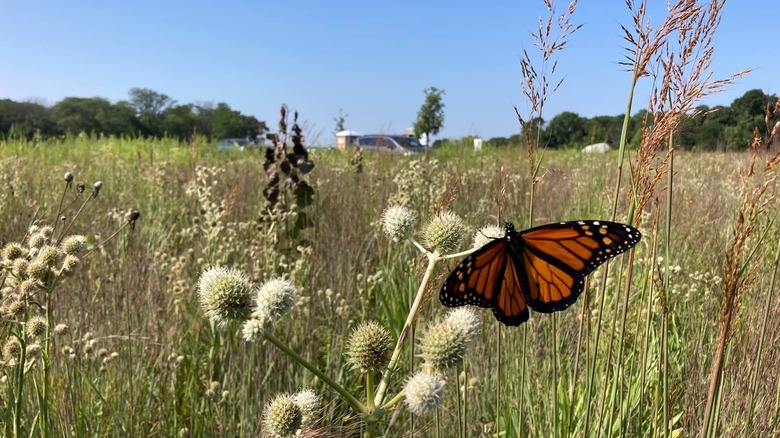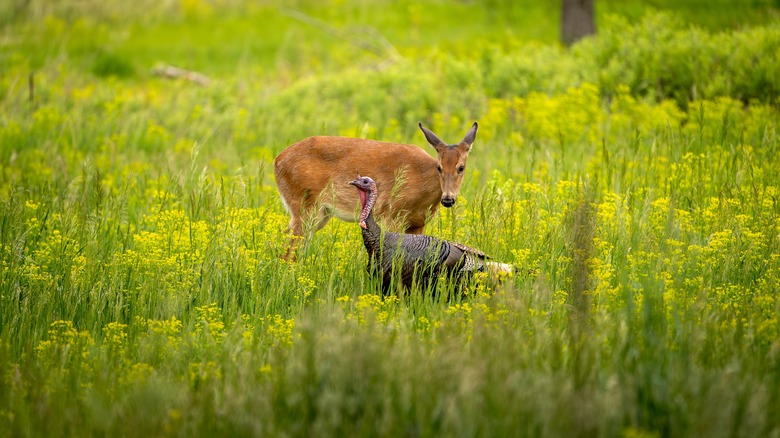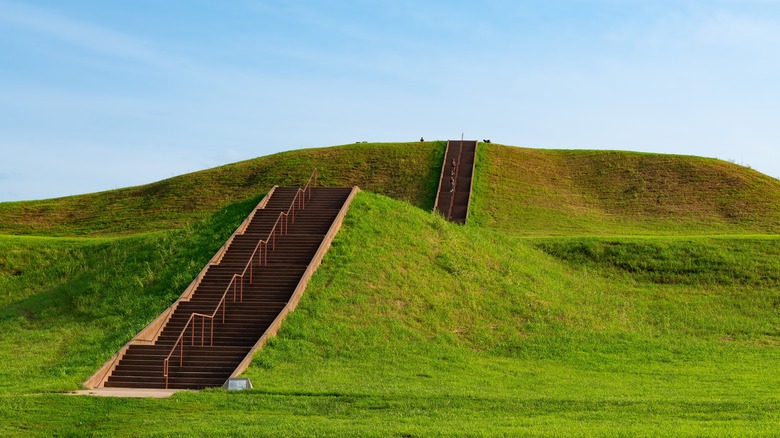Illinois' Tucked-Away Riverfront Park Has Picturesque Trails, Rugged Ravines, And 100 Acres Of Idyllic Prairie
Near the confluence of the Fox and Illinois rivers, this unassuming park, sitting in the postcard-perfect town of Ottawa, rewards travelers with a hundred acres of quintessential Illinois prairie. Compared to the thousands of acres of Ferne Clyffe State Park with its epic caves, rock formations, and waterfalls, Dayton Bluffs Preserve's meager 253 acres (including 100 acres of open prairie) make it seem like a playground. But what the park lacks in size, it makes up for in picturesque, unspoiled trails and rugged ravines, as well as the enchanting music of the bountiful Fox River running right through it.
With its miniature canyons and prairies filled with wildlife, Dayton Bluffs Preserve is the perfect place to enjoy a stunning pocket of Midwest wilderness tucked away by the murmuring riverfront. Less crowded than the super-popular Starved Rock, which attracts almost 2.5 million visitors per year, Dayton Bluffs is devoted more to a conservation-first approach, where visitors are invited to act as guests as much as guardians of their beautiful natural surroundings.
Far from being a remote wonder accessible to only a few, Dayton Bluffs Preserve is also in an ideal location; it is right on the doorstep of the historic town of Ottawa, a neighborly city with an award-winning downtown, and a great gateway to the state parks. The preserve, in fact, is just 5 miles away from the center of town, and you would miss out on a little historical gem if you skipped Ottawa. That said, you can easily reach Dayton Bluffs Preserve if driving from any of Illinois' main hubs. For example, both Chicago and Peoria are about 80 miles away.
Exploring Dayton Bluffs Preserve
A short drive from Ottawa along Illinois Route 71 will take you to an interchange just south of Interstate 80. This is where the Dayton Bluffs Preserve begins, and there is parking available upon entry. From here, you can explore on foot by following one of the many trails. For an easy-going rendezvous of about an hour, you can embark on the Dayton Bluffs Loop, approximately 2.5 miles through stunning open-air prairie and brush with plenty of birdwatching and free-flow hiking opportunities. Keep your eyes peeled for deer and wild turkeys crossing the edge of the prairie in the mornings.
It's no wonder Dayton Bluffs Preserve has been given the title of "ecological and archeological wonderland" when it passed hands from private land into the guardianship of The Conservation Foundation in 2013. Its tall trees, roiling creeks, and unspoiled prairies sit alongside prehistoric archeological sites discovered right in the heart of Dayton Bluffs. And as you walk along the Fox River and its ramifications feeding the green prairie, you will be able to enjoy the riverfront in its untouched state.
Should you wish to brave the stunning ravines that abound between slippery creeks, visitors have mentioned there are ropes in places to help hikers navigate the bluffs. The vistas at the end are a real reward, not just to observe the narrow, steep valleys, formed by centuries of geological erosion, but also to take in the unique fauna and the flora of the place. You can hike right along the ravine when it is not flooded, and spot species including Virginia bluebells, and dozens of butterflies and moths, including majestic monarchs.
Learn about Dayton Bluffs' Native American roots
Not just an oasis for keen hikers who want to be immersed in the natural wonders of the Prairie State, Dayton Bluffs has much more to offer with its prehistoric geological formations in the form of breathtaking ravines and a strong spiritual connection to Native lands. In fact, the origins of Dayton Bluffs Preserve predate its commercial and conservation uses in the modern era. While its physical, gorgeous tree roots go far into the depths of the ground, where they meet the splendid ravines the park is known for, its symbolic roots are entwined with Indigenous nations who preserved the land for centuries. The Conservation Foundation, which now preserves Dayton Bluffs, has a dedicated land acknowledgment statement and a pledge to treat the ancient spiritual grounds with respect.
Illinois has a wealth of sites strongly linked to Indigenous nations and Native American traditions dating back to prehistory. One such example is the breath-taking Cahokia Mound State Historic Site, the largest prehistoric earthen mound north of Mexico, and recognized as a UNESCO heritage site since the 1980s for its irreplaceable value to American civilization.


